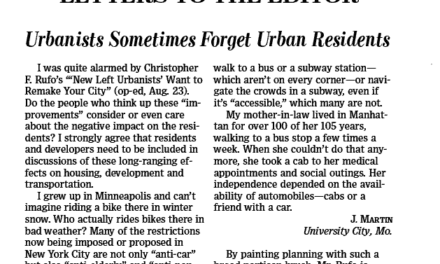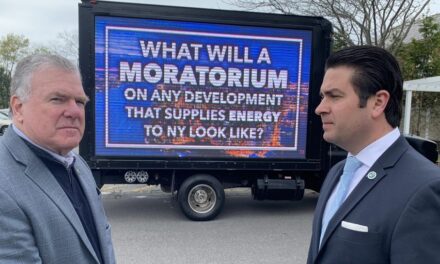The following was written for the Long Island Press, published on April 5, 2016. You can read the original here.
Syosset Park is a rarity in Nassau County: It’s a large-scale development of regional significance. The proposal for the former Cerro Wire property is now slated for an environmental review by the Town of Oyster Bay, a municipality that has seen its share of troubles as of late. The process could take up to two years. So far, nothing beyond conceptual artwork and specs has been finalized.
Will Long Island’s market even be able to support the finalized mixed-use plan by then? It’s a good question, among many others.
When the Michigan-based Taubman Centers proposed building a luxury mall on the property by Robbins Lane and the Long Island Expressway service road, community opposition lasted for almost two decades, fueled in no small part by the Simon Property Group, their rival mall developers. In 2014, Taubman sold out to Simon, which had already bought adjacent public property from Oyster Bay Town for $32.5 million. Simon reportedly paid Taubman $230 million for the 39-acre Cerro site but the deal also included Taubman’s interest in a mall in Arizona that the two companies had jointly owned so the exact sum is hard to parse.
So, who did win? Was it the Town of Oyster Bay? Supervisor John Venditto’s efforts to stop the project culminated in a 2013 referendum, which led to the sale of the Town’s 54-acre public works site adjacent to the property. Were the residents victorious? Their town is struggling to maintain its ever-dwindling coffers, and is starving for sales and property taxes to stay afloat. Or is the answer buried in the complex economics of project development in Nassau County?
The new developer, Oyster Bay Development LLC, is a cooperative effort by Castagna Realty, the Albanese Organization and Simon Property Group. They’re pitching an ambitious vision for Syosset Park: 625 owned residential units, complete with 355,000 square feet of retail and 200,000 square feet of office space on 93 acres. Finer points of the proposal include “two business-style, boutique hotels” with a total of 325 rooms, 65,000 square feet of restaurant space, and 35,000 square feet of “entertainment/theater offerings.” The housing will be mixed only by type, and not by ownership: flats, condos, townhouses, “traditional cottages,” and full-sized single family homes.
With project specs like these, more common to a Suffolk County proposal for somewhere along the William Floyd Parkway than in the heart of mostly built-up Nassau, one might think the new developers are too ambitious. But with memories of Taubman’s luxury mall seared into the minds of area residents, the team was smart. Syosset Park is a much better option for the community than Taubman’s original mall proposal. These developers presented an attractive development that hits all the right notes and skips any discord.
It’s an interesting project—likeable even—but it counters the narrative that so many developers in our region have tied their futures (and fortunes) to: Rentals are nowhere to be seen. According to the Long Island Index, we could use at least 72,000 units to fill the need for affordable housing. This Syosset Park plan doesn’t even mention the other buzzwords: “attainable” and “workforce.”
The project team knows their audience well. The Town of Oyster Bay has a notoriously low tolerance for high-density development. So, do the residents win with this project? Perhaps. They get the type of growth that they want—and they get to keep out the people that they don’t. Even better for them is that no mall will be thrust upon them.
The town surely wins. After getting a cash infusion of $32.5 million for its public land, and the supposed eventual tax revenue from the retail, office and “entertainment” usage, Oyster Bay could expect more money in the coming decades. The development team comes out ahead, too. Resident opposition to the proposal was seemingly muted when it was first announced, with nary a whimper over the last year. Once the environmental review is completed, Syosset Park project will likely be approved in some shape or form.
But planning in the western portion of LI is different from what happens out east. Nassau’s political power structure has been corroded with patronage and rocked by scandal, while Oyster Bay’s residents are openly questioning the integrity of the town’s planning department in the wake of its own improprieties. It’s reasonable to doubt that data and community need take precedence over insider deals and under-the-table offerings.
With Syosset Park, a detailed, multi-year environmental review is a necessity because of the complex environmental issues present. From the capped landfill to the site’sformer superfund status, the impact of placing residential development there must be properly assessed before any more steps are taken. But how can residents trust that the review will be sound when it’s carried out under the auspices of local governments with dubious reputations like theirs?
And that’s just the environmental facet of this complex proposal. Economically, Syosset Park is a game changer thanks to the sizable introduction of market-rate housing, retail and commercial offerings. But can the Island’s already tight commercial market absorb yet another 200,000 square feet of commercial office space or 355,000 square feet of retail?
Large-scale developments are cropping up from Yaphank to Islip, Ronkonkoma to Mineola. These other projects are pitching the same benefits that are supposed to accrue from Syosset Park’s completion. But it will mean nothing if the office space is vacant and the new stores are empty. And will families who move into the “walkable community” that Syosset Park is supposed to become find themselves played for suckers?
So, once again, despite the latest news, Cerro Wire remains full of questions.
Rich Murdocco writes about Long Island’s land use and real estate development issues. He received his Master’s in Public Policy at Stony Brook University, where he studied regional planning under Dr. Lee Koppelman, Long Island’s veteran master planner. Murdocco is a regular contributor to the Long Island Press. More of his views can be found on www.TheFoggiestIdea.org or follow him on Twitter @TheFoggiestIdea.












